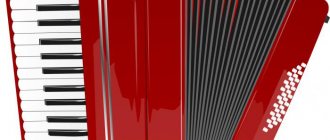Modern technologies change not only technology, but also culture and language. Computer slang, which emerged as the professional language of programmers and turned them into a mysterious caste, was adapted by Russian-speaking users. The need to quickly transmit information has made it very popular in everyday communication.
Proof - what is it?
With the advent of the Internet, Anglicisms occupy an increasingly strong position in the Russian language. For example, at present proof is slang, but hypothetically one can assume that one day a math teacher in a lesson will give grades for proof of a theorem. If we consider in detail the question of what proofs are, we can note three variants of the meaning of this word:
- Proof is proof or confirmation of a statement or fact.
- Proof is a special technology for making medals and coins.
- Proof is a unit of measurement of alcohol strength, not used since 1980.
Pruflink - what is it?
If proof (English) is proof, then link (English) is link. Thus, a proof link is a link to a source that confirms the reliability of information or the reality of a fact. In disputes, unfounded statements cannot convince anyone, especially if we are talking about information that raises doubts. Opponents need confirmation, which they can check personally by clicking on the link.
A good prooflink must meet the following requirements:
- You need to refer to an authoritative source that does not raise doubts about the reliability of the published information. (Wiki sources do not meet such requirements, due to the fact that they open access to editing information to anyone.)
- A reference to scientific research, its methods and results will be impeccable.
- Not everyone knows what a photo proof is, although it is an ideal proof link - a link to a photo document. The same characteristics are shared by a proof video – a link to a report from the scene, and a proof pic – a link to an image.
- You should not refer to someone else’s “authoritative” opinion, since it is not such for everyone. In addition, information presented from the words of someone receives a subjective interpretation and loses objectivity.
Additional meaning
It should be noted that the word proof also has another meaning related to numismatics. In numismatics, proof refers to rare coins that are minted by mints only in honor of a specific event.
Such coins most often indicate their denomination, however, in most cases they do not come into use, the reason for this is that their very value is higher than their denomination. That is why in most cases such coins are used for all kinds of collections.
In addition, often such coins can be made of precious metals, and a special case is included for their storage. As a rule, the value of such coins only increases over time, which makes them an even more valuable acquisition.
As for the purchase of such coins, most often they can be purchased either at branches of state banks, or from collectors, for example, on special websites dedicated to numismatics.
Now you know exactly what the slang word proof means, we hope we were able to explain this term in simple words. And if necessary, you can always provide your interlocutors on the Internet with authoritative proofs of your words. Also, you will now have an excellent opportunity to show off your erudition, since now you know another meaning of the word proof, which means rare coins.
Proof - comes from the English word proof and is translated as confirmation or proof. What is proof? This is a demand or request to provide some evidence to the words. This is done in order to avoid low-quality and unreliable information.
On the Internet, you can often encounter a situation where people argue and prove their point of view. Holy wars flare up on forums and chats for various reasons, and the most popular topics receive hundreds and thousands of comments and reposts. In such situations, people do not take your word for it; you need to really confirm your words so that other people will believe in them. This applies not only to disputes, but to online communication in general.
Avoid being deceived
Few people believe words on the Internet - this is how our society works. Previously, there was more trust, but now, when it comes to money or personal information, quite often various scammers appear who want to somehow harm the user. Many people find themselves in such situations, stop taking their word for it and demand confirmation.
As a rule, you may be required to provide a screenshot, photo, or something else that is difficult to fake as proof. For example, only real Photoshop pros can fake your photo with an open passport in your hands. Therefore, proof is not one hundred percent confirmation, but it is usually enough when a serious issue is discussed.
If there is no confirmation, then any online conversation will be meaningless. The interlocutor simply will not believe you, and is unlikely to want to deal with you in the future.
In games
You may be required to provide proof to confirm or deny game information. For example, send a screenshot of the characteristics of a sword or armor before selling, or send a real photo before joining a clan or guild.
If possible, provide a prooflink - a link to a page confirming your information. It is advisable that the source be authoritative - a well-known site or a person whose opinion you can trust. And if the information from this source turns out to be incorrect, then legal and moral claims will be brought against him, and not you.
Remember, a screenshot or photograph can be faked, just like a page on the Internet. Therefore, do not trust words 100% and, if possible, check what they write and tell you. Fake news and posts appear on the Internet regularly - bloggers and journalists falsify photographs and materials, take old posts and deliberately distort information in order to obtain some kind of benefit, usually financial.
Examples
"I do not trust you. Let's prove it!"
“Where did you get the information? Pruflink please"
“Are these the real stats of the sword? Proof arrived in the mail"
Disputes on social networks are the essence of online communication. Moreover, it does not matter whether truth is born in such a dispute; it is interesting in itself as a separate discipline. And here one of the interlocutors can with aplomb demand proof from the other. Not everyone knows what this is, so it makes sense to close this gap in knowledge.
What is proof on the Internet?
The Internet provides a lot of opportunities not only to obtain information, but also to communicate on forums and social networks. Strangers enter into polemics on various issues, passionately defending their own opinions. Often, arguing on the Internet is useless, and those arguing, as a rule, pursue goals known only to them.
- In scientific online disputes, divergent points of view stimulate the generation of new ideas, and proofs are evidence provided to establish the truth.
- The opponent's sincere interest in the information that interests him gives him a chance to express and prove his view of the problem. To do this, you need to have a good understanding of the controversial issue, know what proofs are, and use them wisely.
- Virtual reality is not predictable and can throw up a so-called “troll” as a debater, who, hiding behind anonymity, enjoys impunity. In this case, the dispute loses all meaning, because any arguments and proofs become a reason for provocations and insults.
Series "Testimony"
In 2015, the American channel TNT released the series “Proof,” which is positioned by the creators as a genre mixture of drama and science fiction.
The main character of the film is Caroline Tyler, who survived several blows of fate. First, her teenage son dies. Then, after some time, she divorces her husband. In order to find refuge from the problems of real life, she, together with a familiar inventor and businessman, embarks on the study of occult sciences. Caroline believes that physical death is not the end of life.
On her path to the truth, she will have to face the facts of resurrection, ghosts and other supernatural phenomena.
The film's cast can be assessed as quite strong:
- Jennifer Beals;
- David Sutcliffe;
- Edward Gathegi;
- Callum Blue;
- Caroline Kaplan;
- Anna Turmen;
- Joseph Morton;
- Matthew Modine.
Despite the successful idea and excellent acting, the audience did not appreciate the film. The series lasted only one season.
What are proofs in games?
The global network can not only broaden your horizons, but also brighten up your leisure time. Online games allow you to interact with players who are sometimes located thousands of kilometers away. In the virtual world, a player can complete a super-difficult level, win, or even win a real cash prize, and then share this event online, providing a link (which means proof in gamer parlance) as confirmation.
Coin calibration quality
Depending on the technology with which the collection coin was minted, they are divided into two large groups: uncirculated and proof.
What are uncirculated coins? If you translate this term from English, you get “not circulated.” This is designated UC, or in Russian literature you can find AK, and defines a coin minted as usual for general circulation, but which was not in it.
AK coins are different:
- lack of a mirror surface;
- absence of any damage, scratches and abrasions;
- single-plane design with no small details;
- matte metallic sheen.
A single-plane design with the absence of small details is used so that, if necessary, you can replace worn stamps with new ones and there will be no noticeable difference.
Often coins that will not circulate in circulation are immediately placed in cellophane film or capsule after production.
There is one type of uncirculated coin - diamond uncirculated, or BA, BU. This is also a kind of coinage quality. During their production, possible damage to the surface is further minimized, for example, contact between finished products is eliminated. The distinctive characteristics of this coin are:
- shiny smooth surface;
- clear details of the drawing;
- absence of defects characteristic of machine production - notches, scratches.
To achieve such characteristics, careful preparation of tools and blanks is carried out, and the production itself is different, which is why BU coins are highly valued.
Proofs - what is it in numismatics?
One of the meanings of the English proof is verification, test, test print. Initially, proofs were the name given to the first few coins minted with an already approved, but still new stamp. Later, this was the name given to the special technology of minting coins and medals. Numismatists know very well what the proof quality of coins is:
- mirror surface with matte relief pattern;
- the letters have rectangular edges and are located at an angle of 90 degrees to the surface of the coin;
- The rim has a lattice pattern (due to the double impact of the stamp).
American rapper Proof
Alias Proo
f worn by American hip-hop artist Deshawn Holton. The future rap star grew up and was born in Detroit, in the same place where the famous Eminem was born. Since childhood, the guys were best friends and hung out in the same area.
Having become famous street singers, they decided to gather under their leadership all the more or less outstanding performers of the city. After some time, the D12 team of six people appeared. For a long time, its most promising member was Proof, and only then it turned out that no one could compete with Eminem.
Over the years of his creativity, Proof managed to collaborate with the following musical groups:
- "Gun Squad";
- "Five Elemets";
- "Promatic";
- "Soul Intent".
However, at a very young age, Proof suffered the fate of many representatives of his profession. In 2006, he died as a result of a shootout in one of the drinking establishments in his hometown. Almost all the prominent rappers from the Midwest showed up to say goodbye to him.
How to clean such coins?
Even if coins are stored especially carefully, sometimes dark or yellow spots, clouding, and so on may appear on them. This may be due to the metal from which the coin is minted and chemical reactions with the environment. Of course, this will seriously upset the collector - the owner of the coin. Conventional cleaning methods naturally won’t work in this case, so how do you clean such coins?
There are several ways to clean the surface of delicate coins:
- MS-70 is a special product used for the highest quality. Copes with patina and fingerprints. The coin is not immersed in the product itself, but applied to it using a cotton swab. Using very gentle movements, remove all stains from the coin. The liquid does not react with metals, but it still needs to be removed from the surface by thoroughly rinsing the coin with water.
- Mechanical cleaning. The coin is held only by the edge, and all manipulations are carried out with gloves. Ammonia is used for cleaning. A cotton swab is also moistened in it and all stains are removed from the coin with gentle movements. You should not press on it at all, especially on a mirror surface. After cleaning, rinse the coin and dry it with paper towels.
Coins minted using proof technology have a very beautiful appearance and high value. Proof is only a minting method, but in no way an indicator of the quality of the coin. There are several varieties of coins that do not belong to the proof category, but are very similar to it. These coins have a lower value and are sometimes difficult to distinguish. Proof requires special care and very careful storage; any damage can significantly reduce its value.
Hello, dear readers of the blog site. In this section, I usually give explanations to those concepts that cause difficulties in their interpretation for novice users. They can be either special terms related to a certain field or activity (for example,), or related to communication on the Internet and are essentially slang ().
Some words can be used in both the first and second cases. Today's post is about one of them. I will try to convey to you what proof is
in its different variations.
Evidence and durability
The reliability of information can be judged by many signs, direct or indirect. Of course, it is impossible to say about proofs that these are immutable proofs of the ultimate truth; such things simply do not exist. But they can and should be urgently asked and even demanded in cases where a truly serious and fundamental issue is being discussed. To any controversial remark, no matter how unpleasant it may be for your opponent, you can expect the question in response: “How can you prove it?” And if there is nothing to prove, then the whole polemic with “iron” arguments turns into an empty shaking of electronic impulses of the World Wide Web, which is of no use. Therefore, you should not enter into a heated discussion without preparing proof confirming your position. The meaning of the word - “resistant” (for example, bulletproof - bulletproof) is very appropriate here. It is not for nothing that there is an expression “to defend”, which applies not only to military positions, but also to one’s own views.
Prooflinks and fakes
You can write anything today. But this is not the problem of the modern information world, but the fact that any rumors, lies and even complete nonsense have every chance of becoming the object of attention of the world community. Such permissiveness only seems to go unpunished; in fact, it is sometimes possible to punish the distributor of deliberately false information. Prosecution for malicious distortion of reality, as in the case of a printed publication, occurs strictly according to the law.
If there is a proof link in the text, then legal and moral guilt formally transfers to the original source; but those who repeat lies without careful verification or for other reasons are also worthy of all censure.
Thus, photographs and videos used to illustrate any events may not be related to the material, but rather borrowed from chronicles of past years. This method of misleading a mass audience has a name - “fake”. Modern search engines identify the similarity of published materials, automatically finding the original source.











